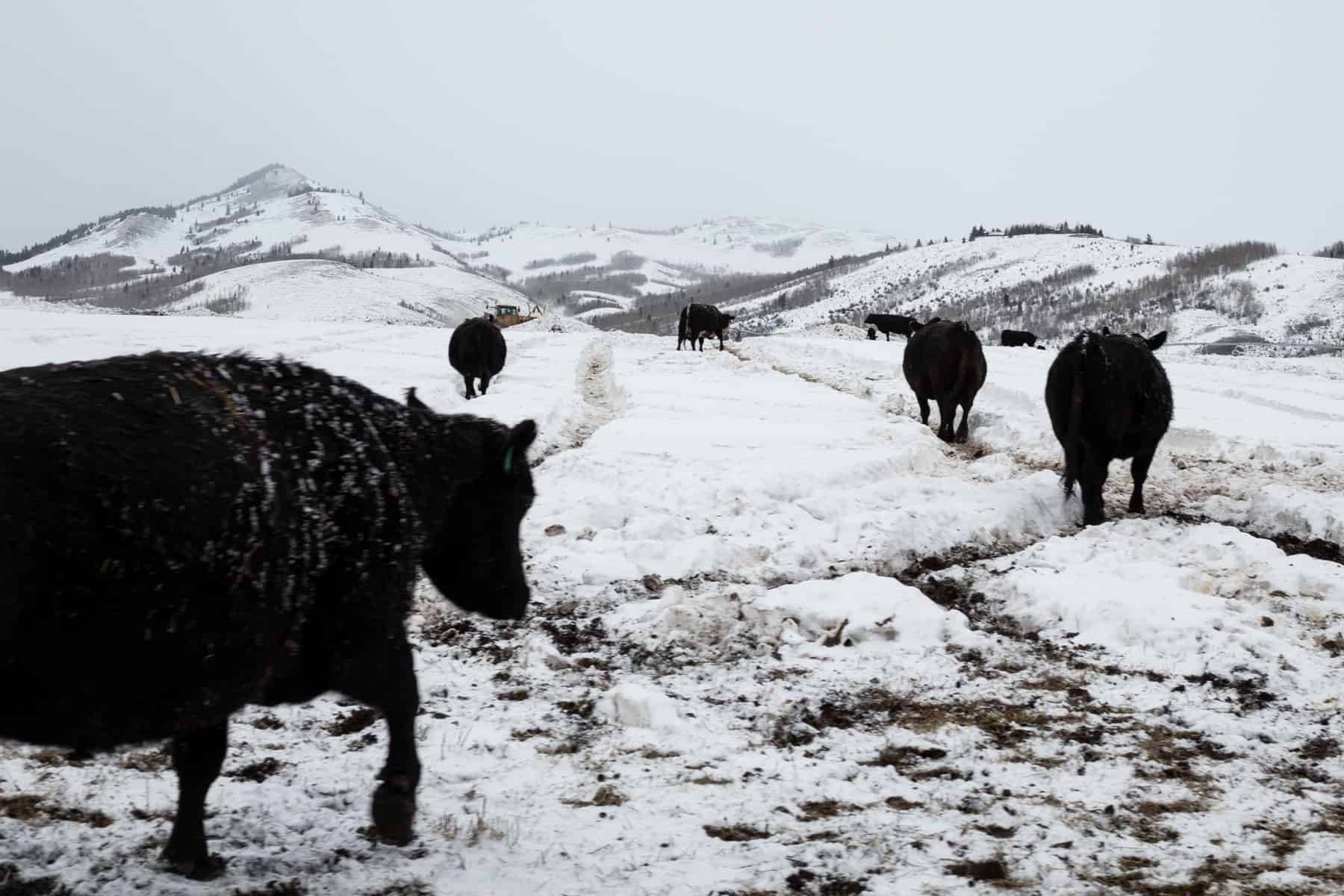By Molly Absolon // Photography by Ryan Dorgan
—
Winter is the easiest time of year, until it’s the hardest,” says Corinne McAndrews, the owner of Late Bloomer Ranch near Driggs.
“It will be low-key, just feeding, mucking stalls, etc. and then we get a blizzard. Suddenly, fences are buried, the water freezes, the plow breaks, and it’s game on.”
In the United States, books and movies have created an image of ranch life that shows ranchers hunkering down in the winter. It’s the time they get to sit around the fire, bake bread, and play music, and certainly some of that goes on in ranch houses around the Tetons once the snow starts to fly in the fall. But animals always need food and water, regardless of the weather, and that means hours of work for their owners, even when it’s cold and dark outside.
To the layperson, winter can seem brutal for livestock living in the Tetons. Temperatures here are cold and the snow gets deep. It’s easy to anthropomorphize when you catch sight of a sheep, cow, pig, or horse standing in a field—its butt to the wind and its back covered with a dusting of snow—and think the animal must be miserable, but area ranchers say their livestock are well suited for the temperatures.

After pulling a sleigh to feed the herd, Bill and Darrell are rewarded with treats from Pete Linn at Linn Canyon Ranch.
“Our animals are bred to withstand the cold,” McAndrews says. McAndrews raises pigs, sheep, and chickens on her farm.
“Take the pigs. They don’t mind the cold. They have two inches of fat on their bodies. They like to sleep in a big pig pile on top of each other. When they’re in a pile, they send off a geyser of steam into the cold air.”
Bill Cawley, who’s been the ranch manager at the Walton Ranch near Jackson for fifty years, says the hair on cows mats up like felt in the winter, producing a thick, warm coat. Like pigs, cows bunch up for warmth, taking turns rotating back and forth from the outside of the group, where temperatures are colder, into the center to get warm.
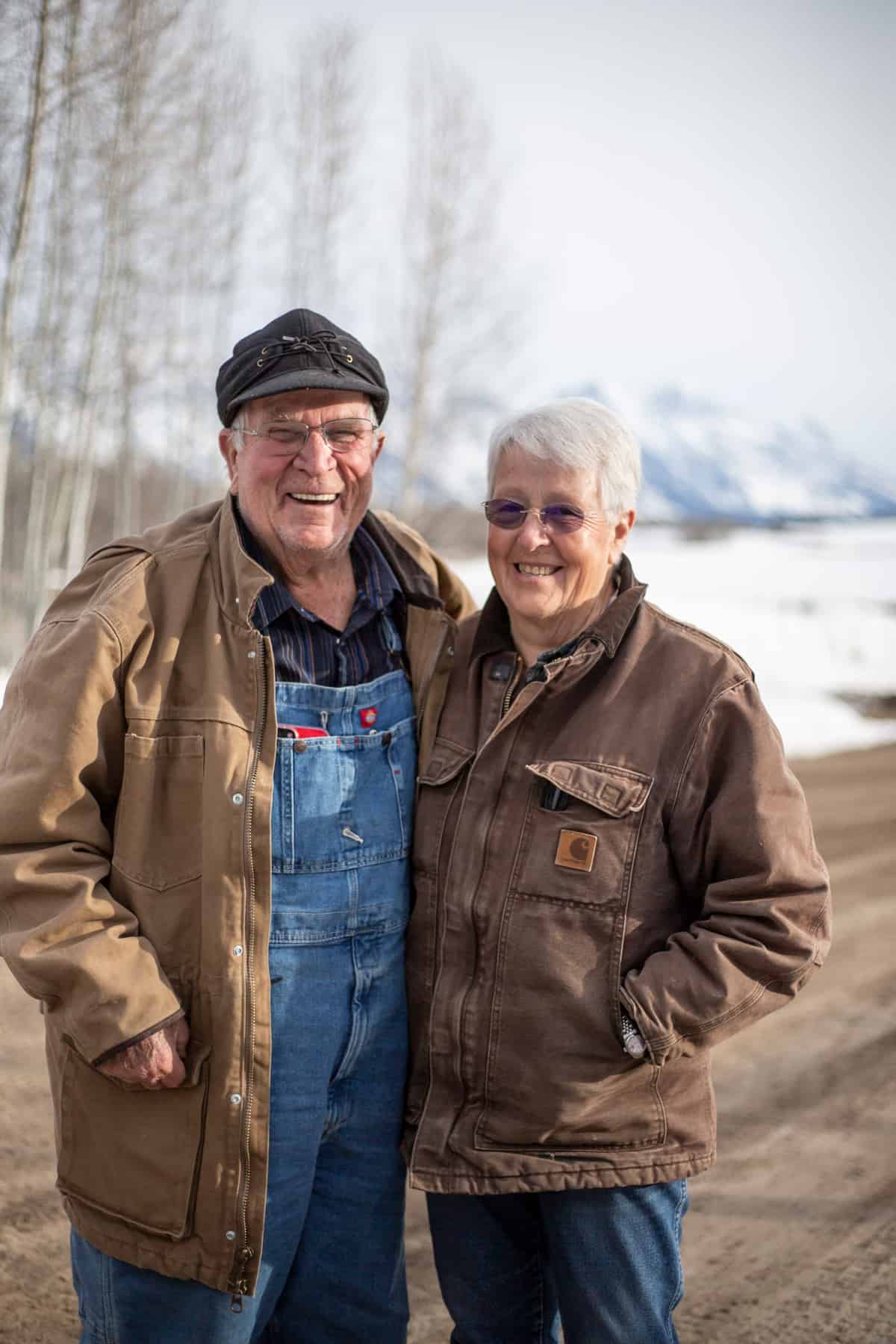
Bill and Carol Cawley have called the Walton Ranch home since 1971 and have managed its operations since 1985.
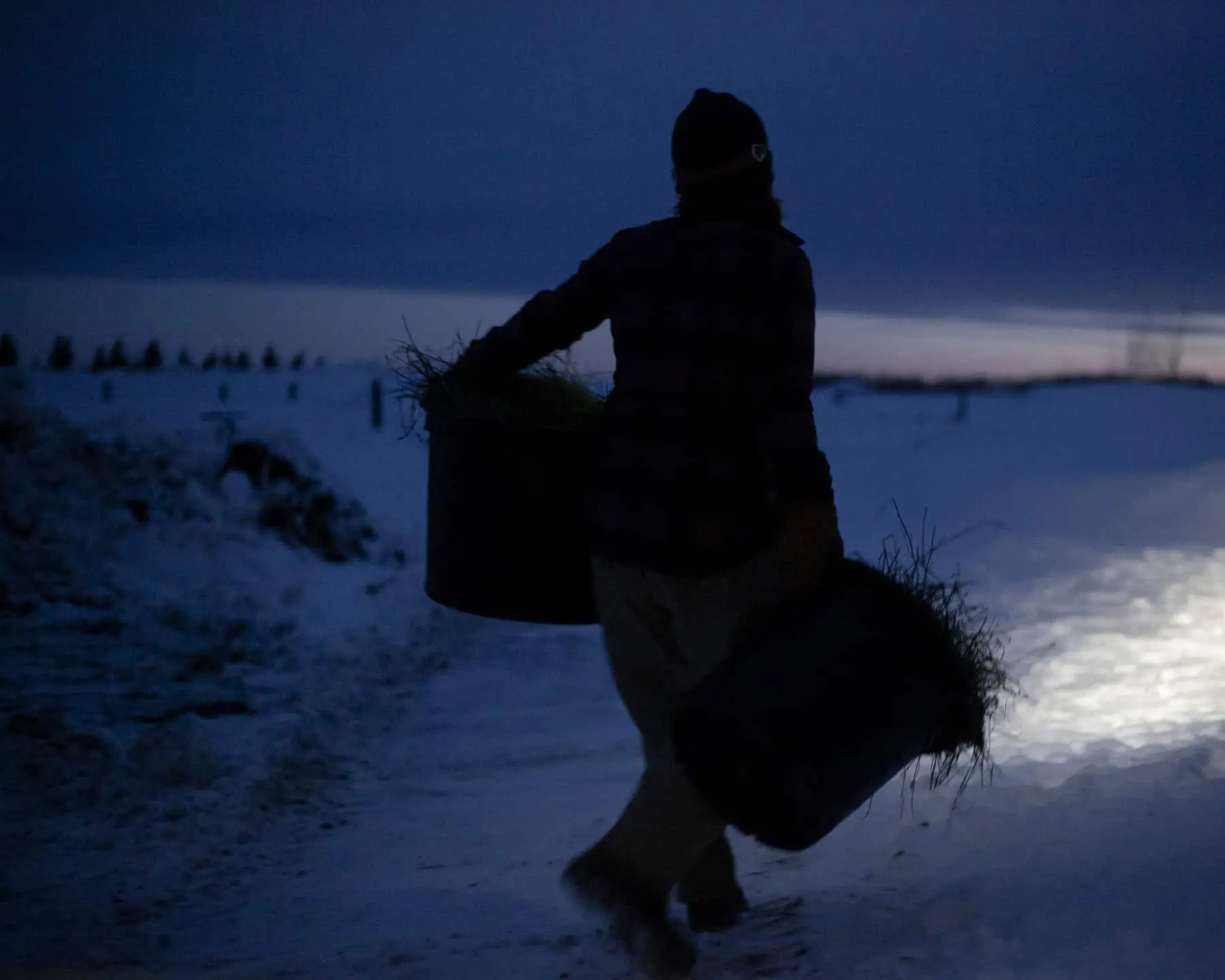
Jessica Konrath heads back home after finishing late-winter morning chores at Winter Winds Farm.
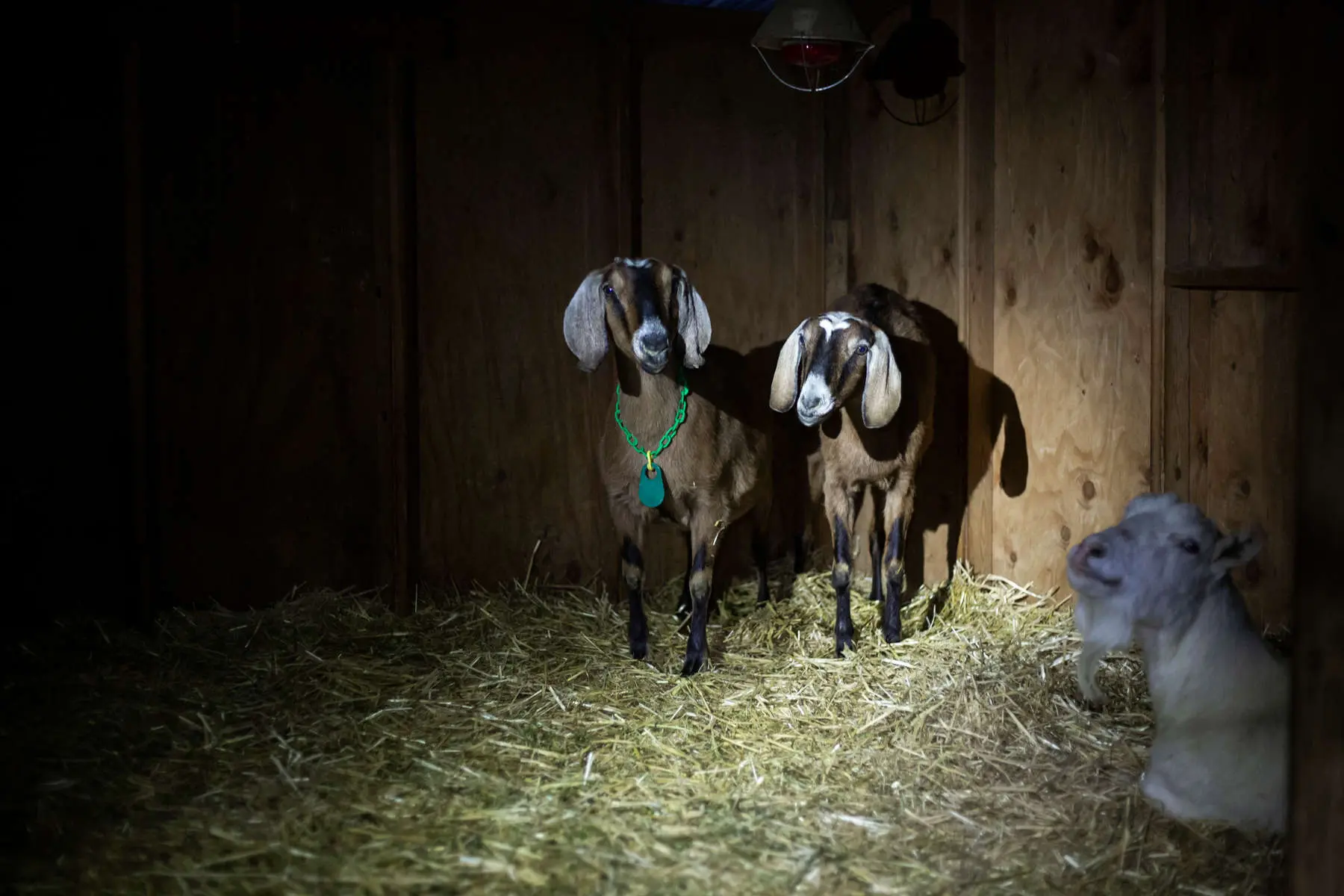
Winter Winds goats keep warm inside
a shed on the Teton Valley farm.
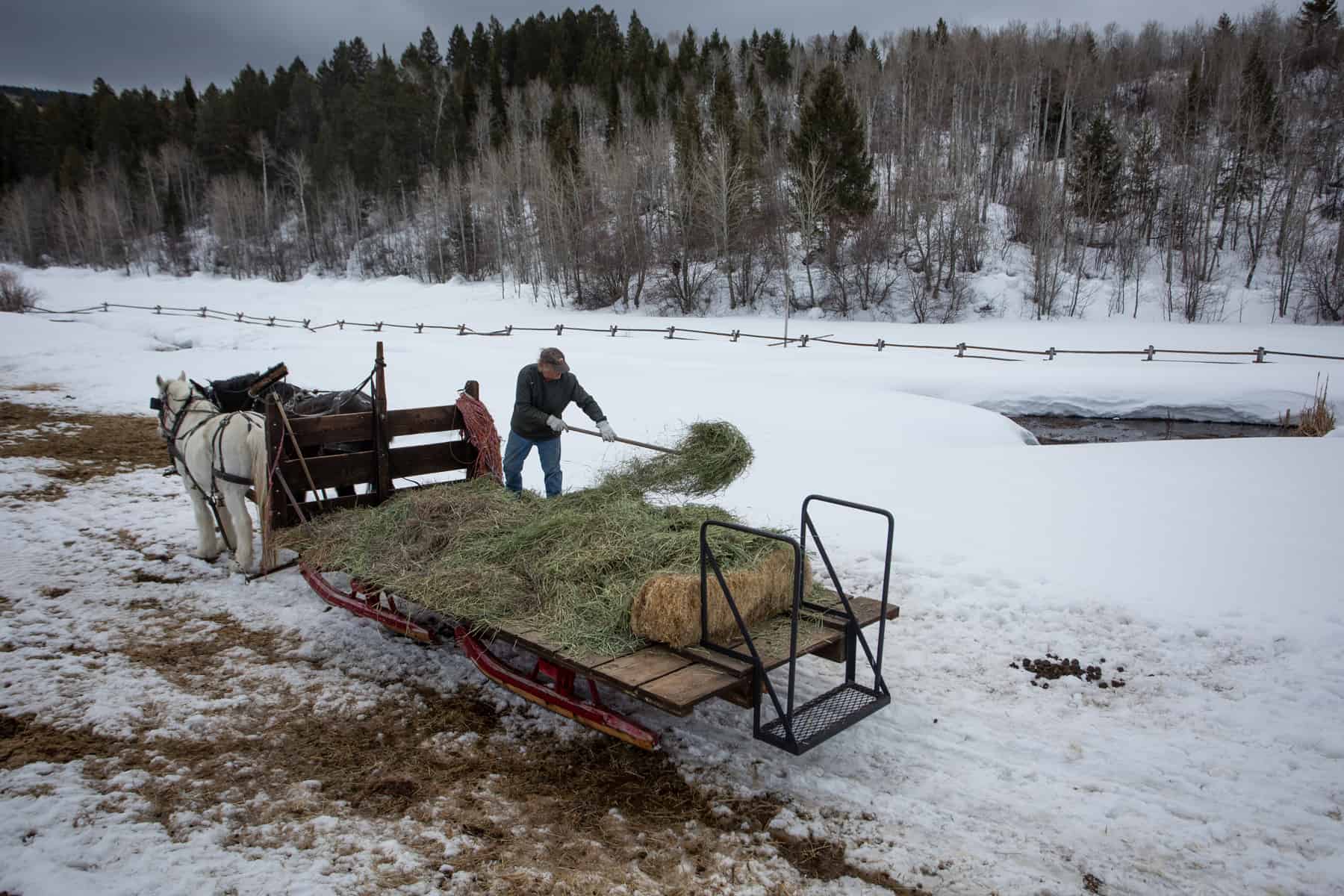
Pete Linn puts hay out for the elk that enjoy wintering on his family’s Teton Valley ranch before feeding his horses.
Cawley says the stories of large groups of animals piling up against a fence in a blizzard and dying in large numbers is something that happens on the Great Plains. He’s never seen anything like it around Jackson, even when temperatures plummet well below zero.
“We just don’t get that kind of wind,” he says.
But while winter weather conditions are manageable for area livestock, the lack of forage is not. Buried beneath several feet of snow for months on end, the grass and alfalfa that keep animals going all summer are inaccessible in the winter, which means the main business of winter ranching is feeding.
“Back in the early days, we fed using horse-drawn sleighs,” Cawley says. “We’d get up in the morning, harness the horses, load up the hay, and go feed. It usually took a couple of hours, then we’d have lunch, and it would be time to feed again.”
These days, the Walton Ranch uses tractors for winter feeding, an improvement that Cawley says saves a lot of time and physical labor. Feedings no longer consume the entire day, so his team is freed up to get to the projects deferred from summer, when time is in short supply.
“Winter is the time for feeding, but it’s also the time to repair equipment, clean the barns, and plan for the summer,” Cawley says.
At Winter Winds Farm, a goat farm in Teton Valley that specializes in handcrafted goat cheeses, Jessica Konrath and Mark Farmer made a conscious decision to stop milking in the winter.
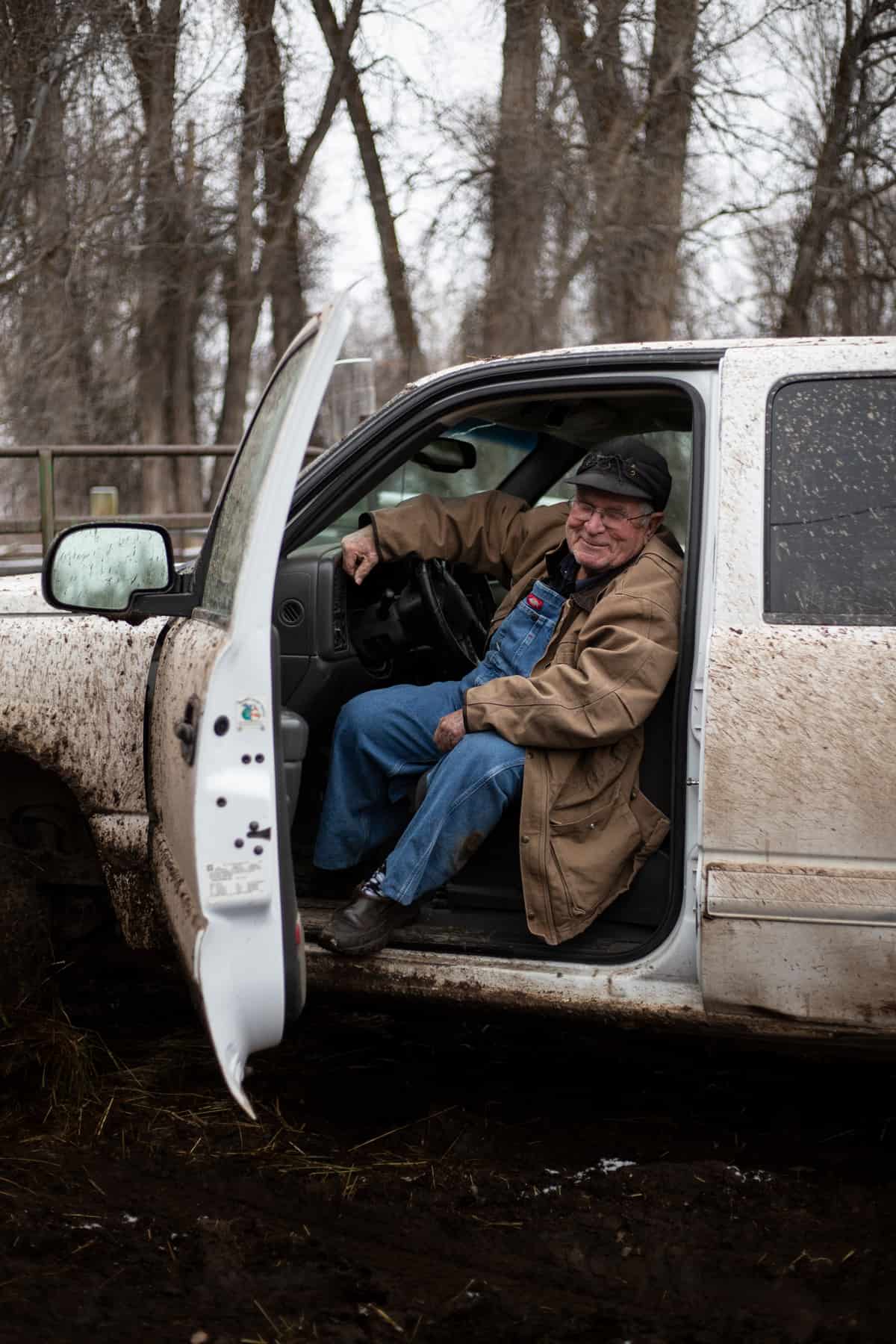
Bill Cawley sits in his trusty ranch pickup.
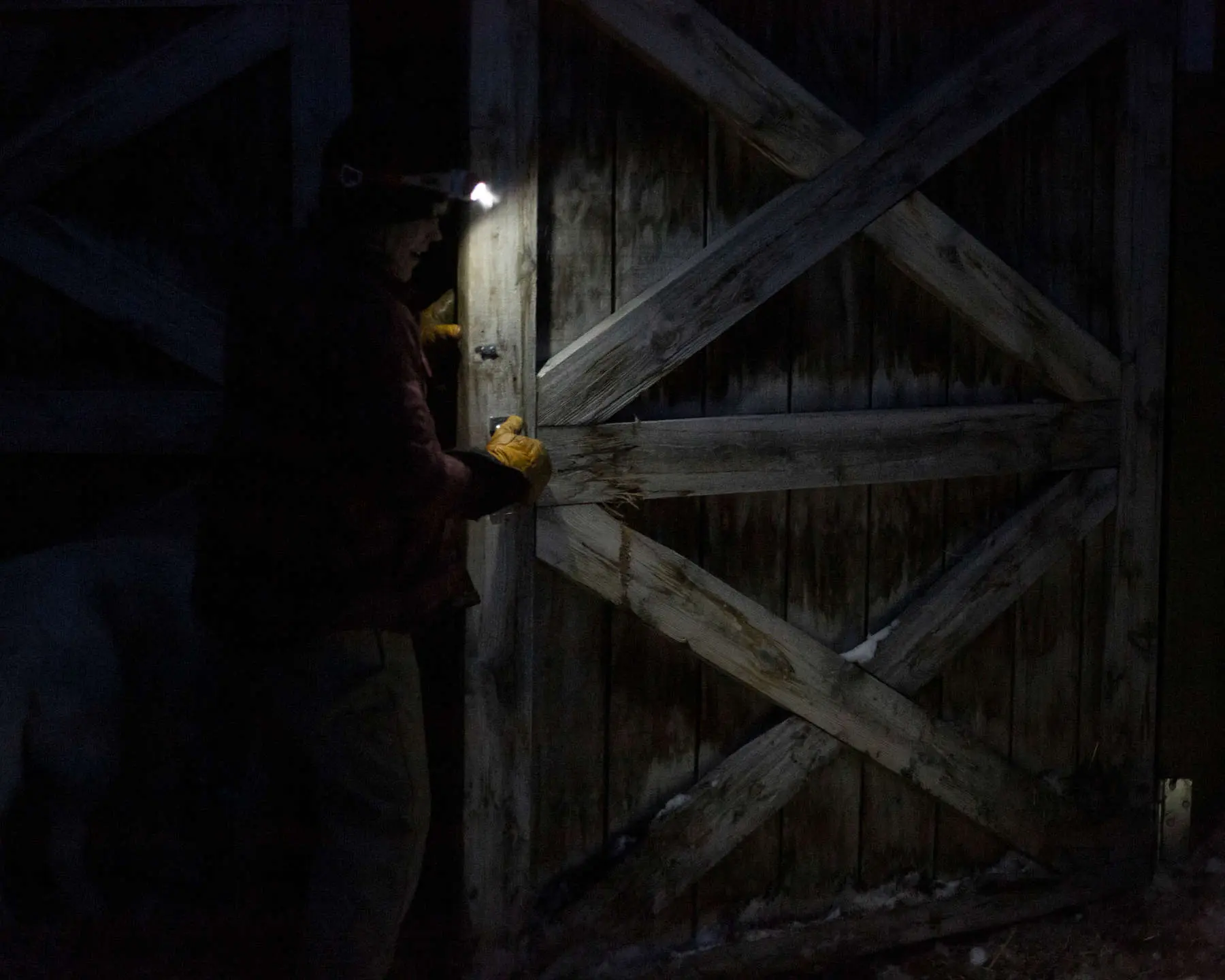
Jessica Konrath attends to her morning chores by headlamp at Winter Winds Farm.
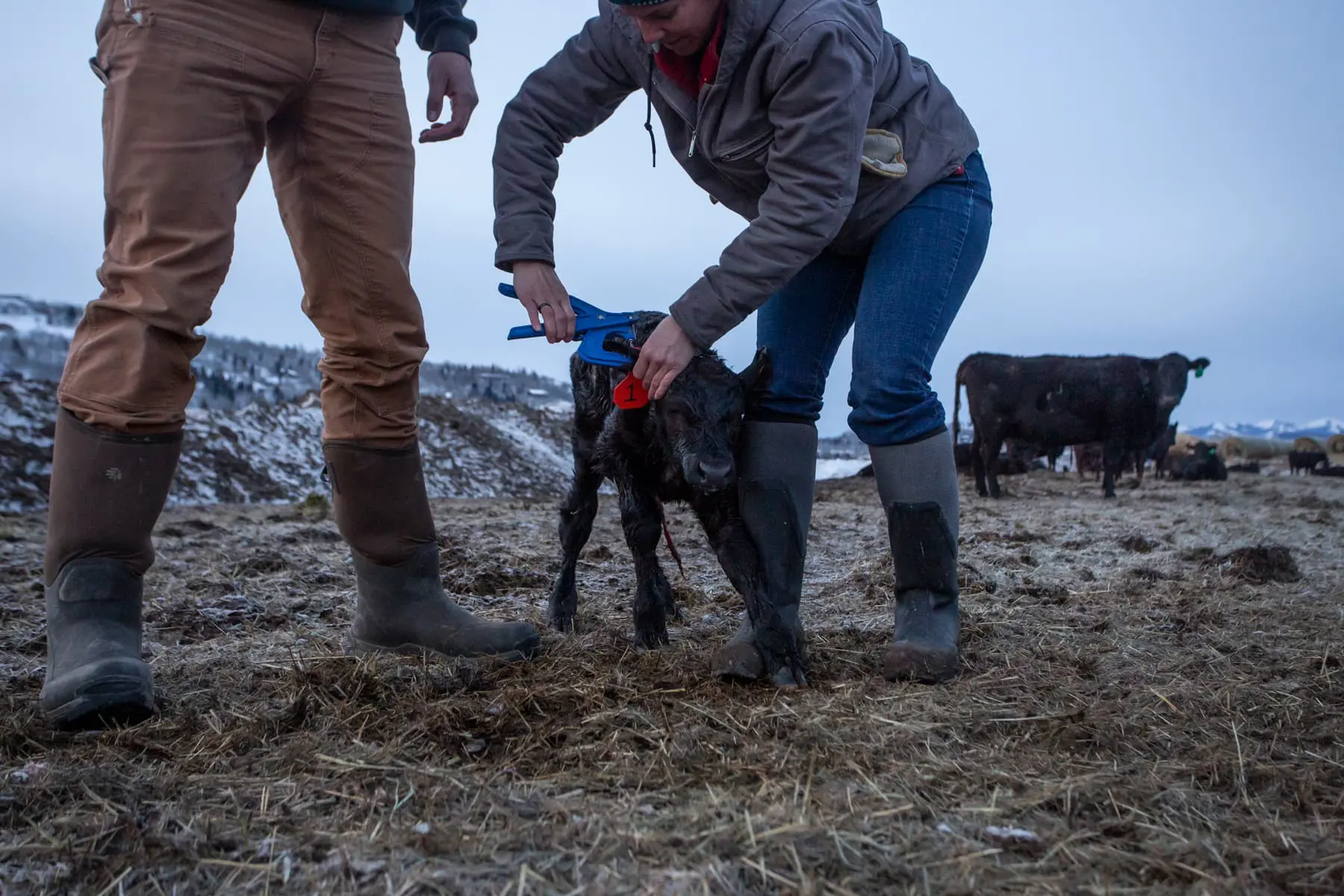
Ed and Casey Stockhausen tag the ear of a newborn calf
as day breaks on the Walton Ranch. Ed does midnight and 5 a.m. rounds to check on the herd during late-winter calving.
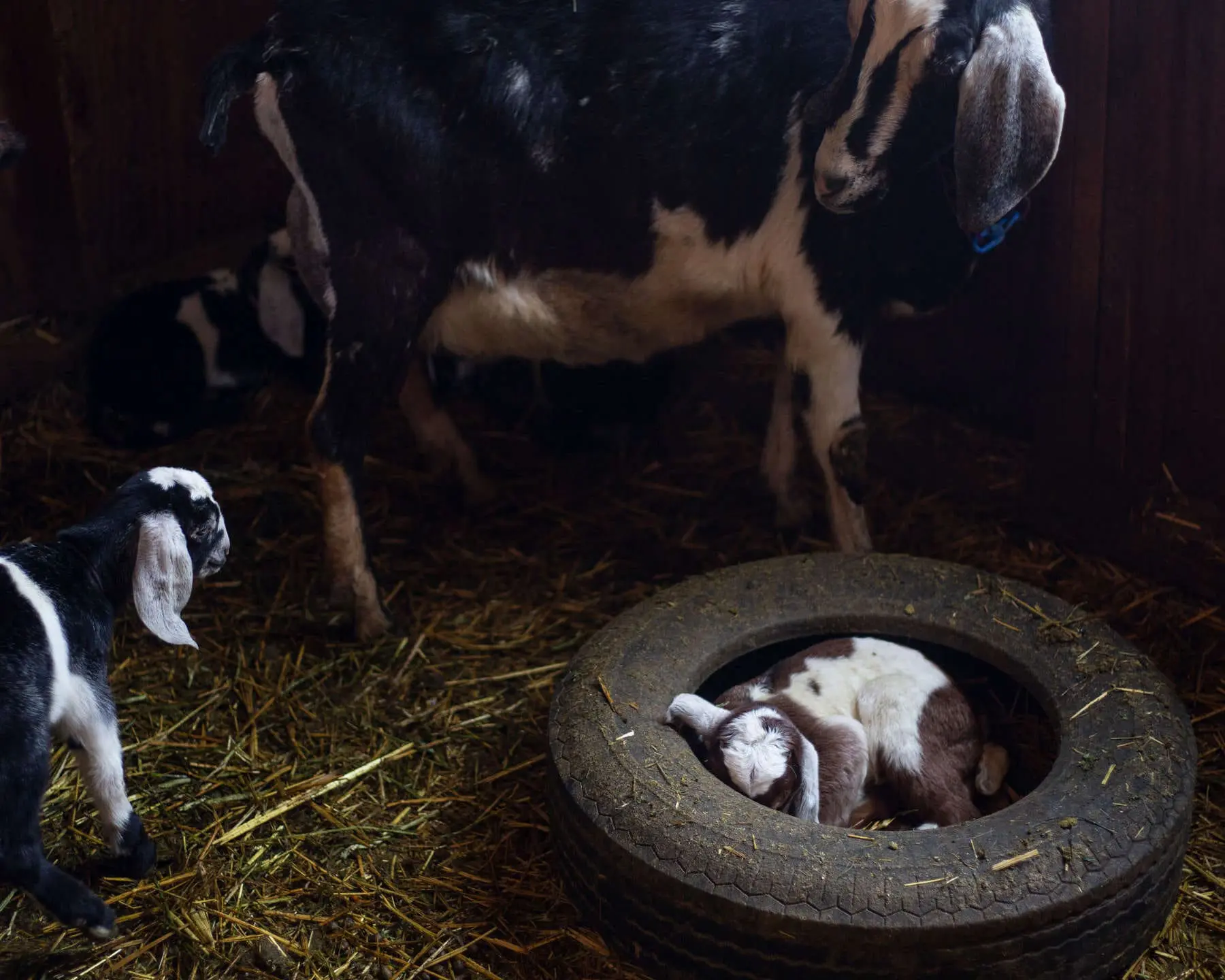
Newborn goat kids find their places inside the barn at Winter Winds Farm.
“It’s important for our quality of life,” Konrath says. “Plus, we want to give the goats a break. It’s really hard on them to be pregnant or lactating all the time.”
“When I think about old-time dairy farmers milking twice a day, 365 days a year—milking even on Christmas, New Year’s, and all the holidays—I’m in awe,” she says.
Farmer says there is also a logistical reason for stopping milk and cheese production in the winter. One of the by products of cheesemaking is wastewater. In the summer, that water can be used to irrigate the fields. In the winter, Winter Winds would need to put it in a holding pond to meet environmental regulations. Given that Konrath and Farmer both work remotely full time to supplement the farm, and that they enjoy having a little time off to recreate, as well as to spend with family and friends, it makes sense to ease off for the winter months. But easing off still means five or six hours a day spent feeding, usually by headlamp in subfreezing temperatures and knee-deep snow.
Konrath and Farmer stumbled upon their goat farm serendipitously right as COVID began to shut down the country. Konrath had fallen in love with goats after she went to a baby goat snuggling session in Virginia near where she was living. She’d been stressed out by work and was looking for something to soothe her soul when she first heard about cuddling baby goats. A few hours spent with the babies revived her and won over her heart. For a few years, she returned every spring to get her goat fix.
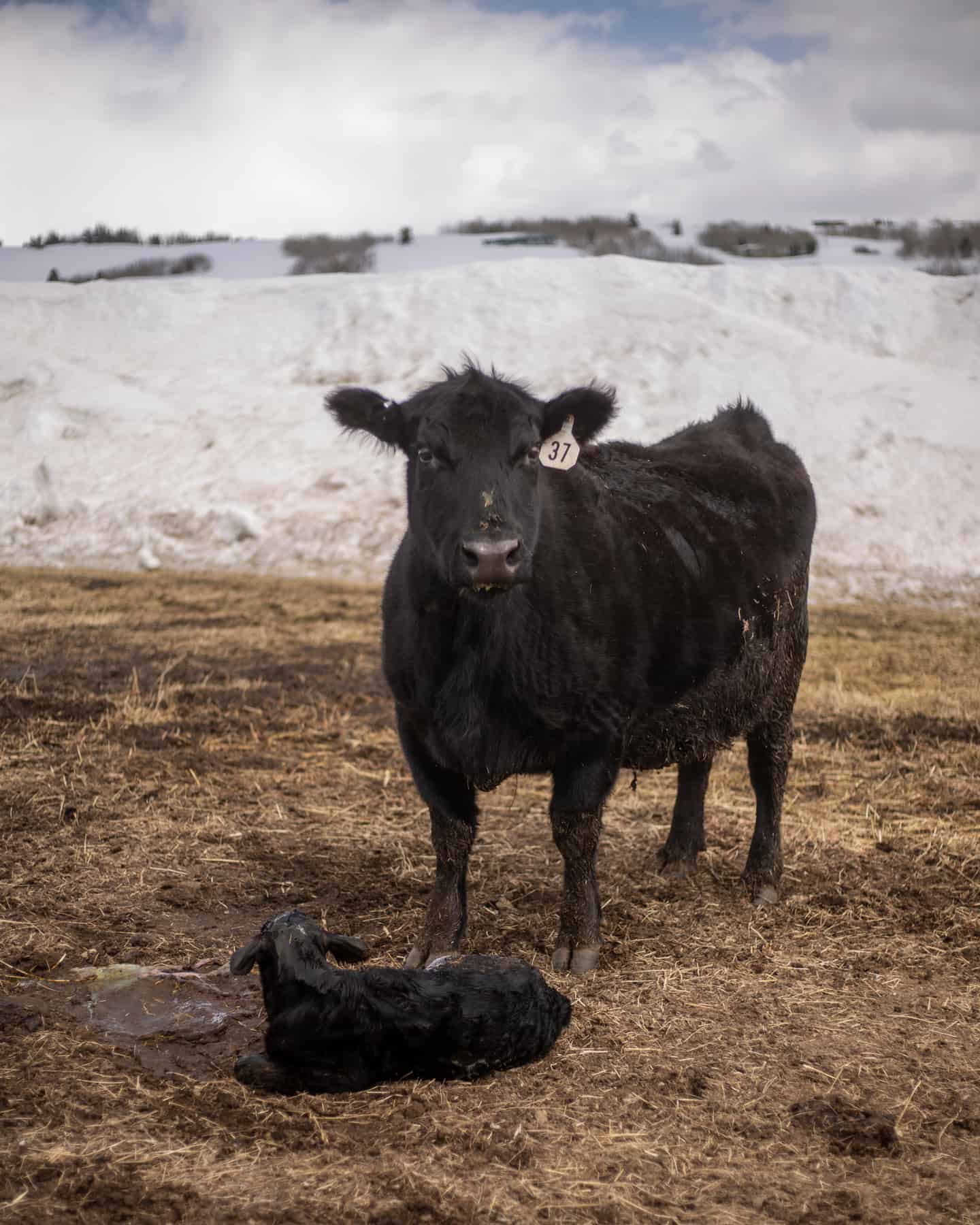
A mother cow and her newborn calf in April on the Walton Ranch.
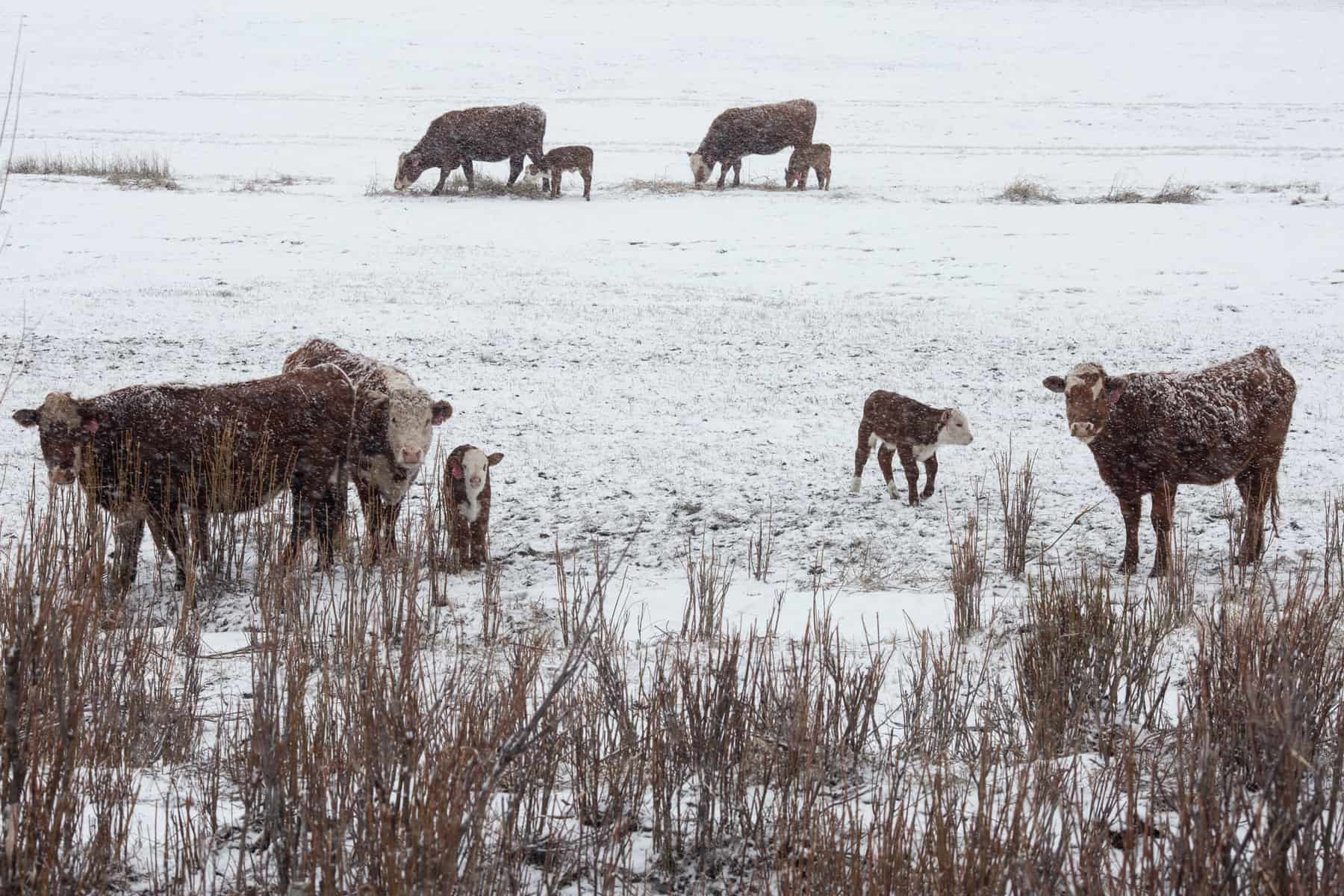
Mother cows and their newborn calves feed as snow falls
in late winter on the Lockhart Ranch.
As she and Farmer began planning their future together, they jokingly talked about how fun it would be to get married on a goat farm. Then Konrath saw a Facebook ad offering a goat farm in Teton Valley for sale. A few months later, she and Farmer made their way to Idaho and began their life as goat farmers. They’ve been at it for three years, and now have a daughter, Nora, who was born this spring.
“Winter is definitely slower for us,” Farmer says, “but we still have to feed twice a day.”
One day, the couple got trapped in Jackson after all the passes into Teton Valley closed due to stormy weather. A neighbor noticed they weren’t around and called them, offering to feed their goats until they could get home.
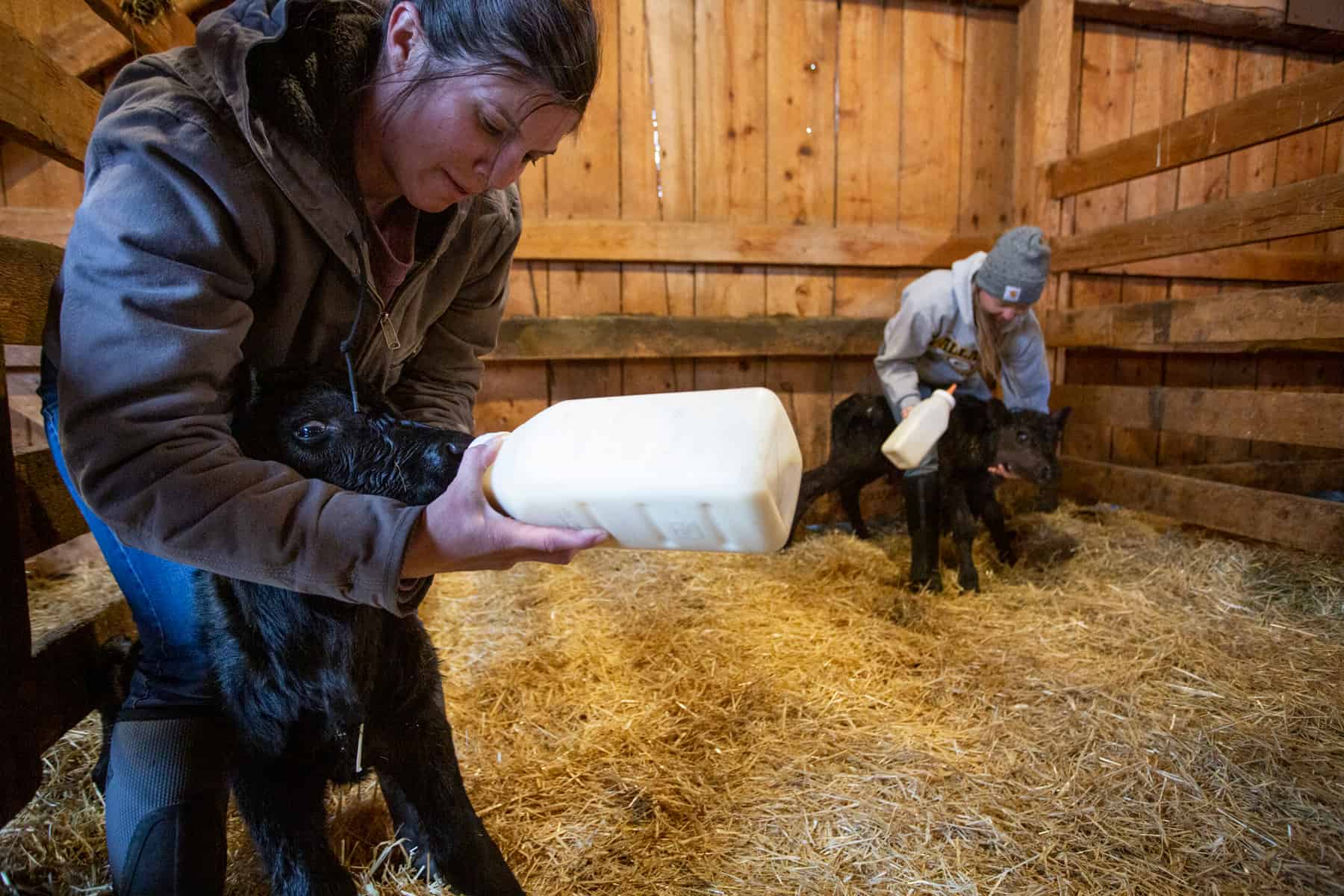
Casey Stockhausen and Tsali Franklin bottle feed calves in a Walton Ranch barn.
“We have the best neighbors we could ask for,” Konrath says. After big storms, when simply getting to the goat pens to feed can be a challenge for the couple, their neighbors often help plow out the farm with their tractor and snowblower.
“It’s a testament to the kind of community we have here,” Konrath says. “When we are in need of assistance, people help out. That’s especially important in the winter.”
The end of winter can come as early as April, but more often, it lingers until June in the Tetons, which means another winter challenge comes when baby animals are born. At the Walton Ranch, calving typically occurs in April. Cawley says his assistant checks on the cows every couple of hours, day, and night, during calving season.
“The cows do pretty well on their own with calving as long as it’s not too cold,” Cawley says. “But when you get those cold snaps—negative 20s say—unless the mother is really good, you have about fifteen minutes before the calf freezes to death. We put them in the tractor bucket and try to get them to the barn as quickly as possible, but sometimes it’s not quick enough.”
“When we are in need of assistance, people help out. That’s especially important in the winter. It’s a testament to the kind of community
— Jessica Konrath, Winter Winds Farm
we have here.”
McAndrews also points to the quality of the mothers when she discusses birthing season at Late Bloomer. Her goal is to have hardy stock that can give birth with a minimal amount of human intervention, but sometimes the odds are stacked against the moms.
“We’ve used heat lamps to help,” McAndrews says. But she adds that she has to have a thick skin.
“Some babies just don’t thrive; some mothers don’t have what it takes to raise healthy, strong young, especially in the cold,” she says. “Those animals may die. It’s just part of life on the ranch.”
As winter finally gives way, chores on the ranch shift. At Winter Winds, the first real sign of spring is the farm’s annual baby goat snuggling day, a tradition Konrath and Farmer have continued from their initial introduction into the world of goats back east.
At all area ranches, the big change comes when the grass greens up and suddenly feeding is no longer their number one priority. What that priority becomes depends on the weather and the animals, but regardless, it means work on the never-ending ranch life schedule.
